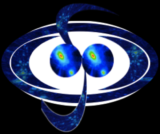News
Warm Dark Matter in Simulations

Check out our latest paper
Warm Dark Matter in Simulations
S. Paduroiu, Universe 2022
Invited Review in the Special Issue
keV Warm Dark Matter (ΛWDM) in Agreement with Observations in Tribute to Héctor J. De Vega
In recent years, warm dark matter models have been studied as a viable alternative to the cold dark matter models. The warm dark matter particle properties are expected to imprint distinct signatures on the structure formation at both large and small scales and there have been many attempts to study these properties with numerical simulations. In this paper, we review and update on warm dark matter simulation studies from the past two decades and their most significant results: structure formation mechanisms, halos evolution, sizes and distribution, and internal structure properties. We discuss the theoretical assumptions and the limitations of the methods employed. In this context, several controversial claims are scrutinized in the attempt to clarify these confusing and sometimes even contradictory conclusions in the numerical simulation literature. We address the circumstances in which a promising keV dark matter candidate should be properly treated in the simulations.
Warm Dark Matter & High(er) Dimensions & Brane ‘Storming’

Check out our latest paper
Warm Dark Matter from Higher-Dimensional Gauge Theories
S. Paduroiu, M. Rios, A. Marrani, D. Chester, Universe 2021
Invited Article in the Special Issue
keV Warm Dark Matter (ΛWDM) in Agreement with Observations in Tribute to Héctor J. De Vega
Warm dark matter particles with masses in the keV range have been linked with the large group representations in gauge theories through a high number of species at decoupling. In this paper we address WDM fermionic degrees of freedom from such representations. Bridging higher-dimensional particle physics theories with cosmology studies and astrophysical observations, our approach is two-folded: realistic models from higher-dimensional representations and constraints from simulations tested against observations. Starting with superalgebras in Exceptional Periodicity theories, we discuss several symmetry reductions and we consider several representations that accommodate a high number of degrees of freedom. We isolate a model that naturally accommodates both the standard model representation and the fermionic dark matter in agreement with both large and small-scale constraints. This model considers an intersection of branes in D=27+3 in a manner that provides the degrees of freedom for the standard model on one hand, and 2048 fermionic degrees of freedom for dark matter, corresponding to a ~ 2 keV particle mass, on the other. In this context we discuss the theoretical implications and the observable predictions.
We explore the shared space between hypnosis and trance states we experience with the Ecstatic Trance Postures. With hypnosis, we bypass the critical mind so that the suggestions delve into the subconscious where automatic behavioral patterns live. The trance is induced with a specific goal in mind, e.g. healing, discovery, stress relief or reprogramming some automatic behaviors and/or beliefs. Hypnotherapeutic techniques, and “shamanic journeying” trance techniques run parallel with a spectrum of healing that is entered through the altered state.
Shamans use trance to obtain information, which they then use to help and to heal community members. Nearly all societies are known to engage in practices that lead to altered states of consciousness. However, the methods, functions, and cultural context vary widely between societies. Since contemporary hypnosis may very well go back to prehistory and have its origin in shamanism, we will compare the induction steps shamanic rituals typically consist of with those employed in most forms of contemporary hypnotic modalities. Also, we will discuss the physiological/mental changes observed in both ecstatic trance and hypnosis, looking at the results from biofeedback, neurofeedback, and personal experience, attempting to integrate all this with the current proposed models for consciousness.
 Marking the 10th anniversary of “The Forbidden Universe” it was an honor to be joining our brilliant friends, authors Lynn Picknett and Clive Prince for a Q&A Podcast on the Mystical Origins and Leading Edge of Science at Cuyamungue Institute.
Marking the 10th anniversary of “The Forbidden Universe” it was an honor to be joining our brilliant friends, authors Lynn Picknett and Clive Prince for a Q&A Podcast on the Mystical Origins and Leading Edge of Science at Cuyamungue Institute.
Check out the Q&A Podcast
The first stirrings of the Scientific Revolution were inspired “by the same unashamedly metaphysical and magic-oriented philosophy” write historians Lynn Picknett and Clive Prince in The Forbidden Universe: The Occult Origins of Science and the Search for the Mind of God. In the search for “God’s handiwork,” who are the key players, the pivotal breakthroughs, and how, along the way, did we become “materialist-rationalists”? Where is the leading edge of science heading, and where must physics meet up again with metaphysics?
Today, while science excels at mapping out ordinary reality, we must ask how well it can map out non-ordinary reality. Dark energy, dark matter, dark to our eyes and technology, as it does not emit, absorb or reflect light, is non-ordinary, remains undetected, and yet, permeates everything.
Cosmologist Sinziana Paduroiu, updates us on the latest chapter on this and other curiosities of our observable Universe, noting that the 5% of the Universe that we have mapped is so complex, so multi-layered, we cannot expect the other 95% to be simple. Which leads us to ask, how does Newton’s Physics, Einstein’s Relativity, and Quantum Physics merge into one continuum? What do our trance experiences reveal about the Alternate Reality and other hidden dimensions of our mysterious, majestic Universe?

